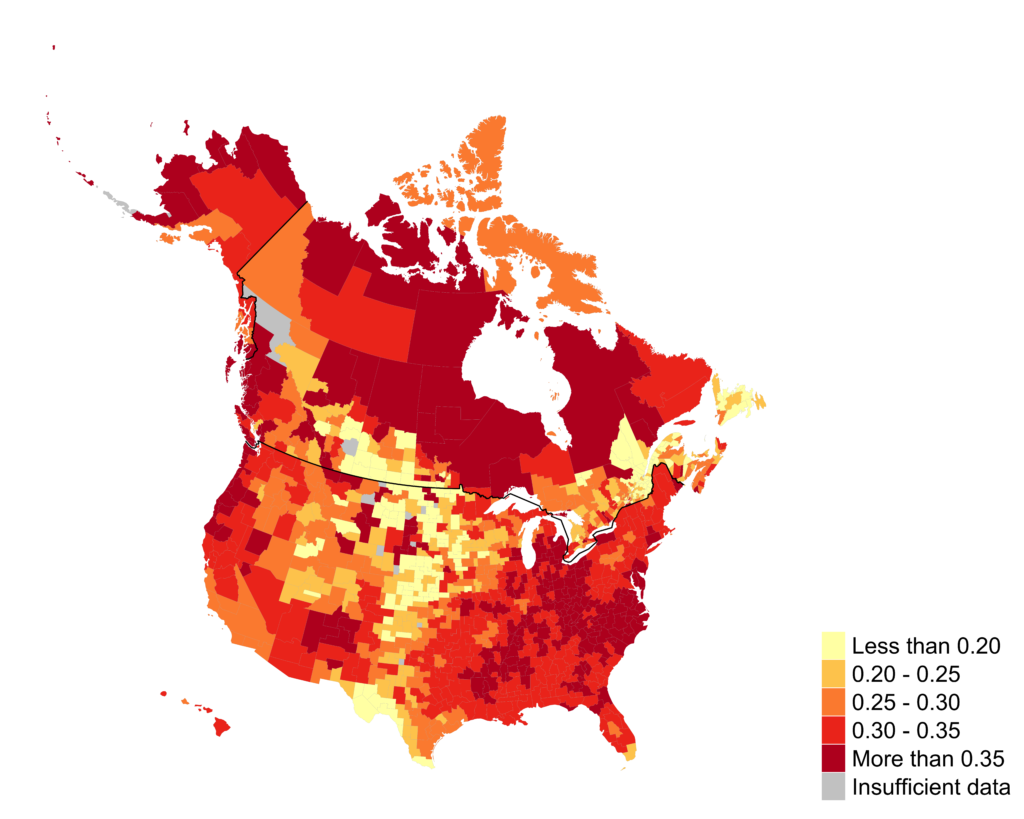May 4, 2020
In this research spotlight, a study by Miles Corak and colleagues of differences within the United States and Canada suggests why U.S. mobility is lower than in many other rich countries.
Social mobility is twice as great in Canada as in the United States, studies have shown. But as research by Miles Corak of the Stone Center and his coauthors Marie Connolly and Catherine Haeck of the Université du Québec à Montréal suggests, a simple comparison of Canada and the United States doesn’t give the most accurate view of social mobility in either country.
A more meaningful comparison is derived from looking at the significant variations of social mobility within each country, the authors show in “Intergenerational Mobility Between and Within Canada and the United States.” The study, published in the Journal of Labor Economics, provides a more revealing comparison of the two countries than any previous cross-country comparison through the use of tax-based administrative data, and comes close to covering the total population of similarly aged young people and their parents.
The study suggests that the American Dream may be more attainable in Canada, where the middle class is within easier reach of children raised in low-income families. Canadian children raised by parents with incomes in the bottom 10 percent can expect to be earning enough as a young adults to place them above the 40th rung of a 100-rung income ladder, significantly higher than their U.S. counterparts, the study’s authors found. To reach a similar point on the income ladder, a child in the United States would have to have parents who ranked as high as the 39th percentile.
The researchers clustered more than 1,000 communities in the two countries — 709 U.S. Commuting Zones and 288 Canadian Census Divisions — into four broad regions, according to their similarity, across a comprehensive set of five different measures of intergenerational income mobility, or the strength of the link between parents’ incomes and their children’s income as adults.
The regions of highest and lowest mobility span the border, the researchers found. One runs through the Midwest of the United States into adjacent Canadian regions, and another groups the southern United States with northern parts of Canada.
However, one relatively low-mobility cluster of communities is located almost exclusively within the United States, and includes large areas of the northeastern seaboard. This group of commuting zones includes almost 60 percent of the children in the study. “This American region is one of the drivers of the overall cross-country differences, with a distinct cross-border effect along the Great Lakes that extends through the northeastern United States and the Atlantic provinces,” the researchers write. “This U.S. area is both more affluent and more unequal than the adjacent Canadian areas, with higher inequality being associated with lower mobility.”
Very low levels of mobility in the South is another important factor behind lower intergenerational mobility in the United States than in Canada. While some parts of northern Canada share these challenges, they represent a much smaller fraction of the Canadian population, the researchers note. “This is the elephant in the room to which simple cross-country comparisons do not draw enough attention: the U.S. mobility challenge may have to do with the longstanding issue of fully integrating the black population in the economic mainstream of cities and regions that have a long history of exclusion,” the researchers write.
While Canadian challenges may be just as important, likely associated with the indigenous populations in geographically isolated areas of the country, “there is no parallel in Canada for the magnitude of the experience in the American South.”



